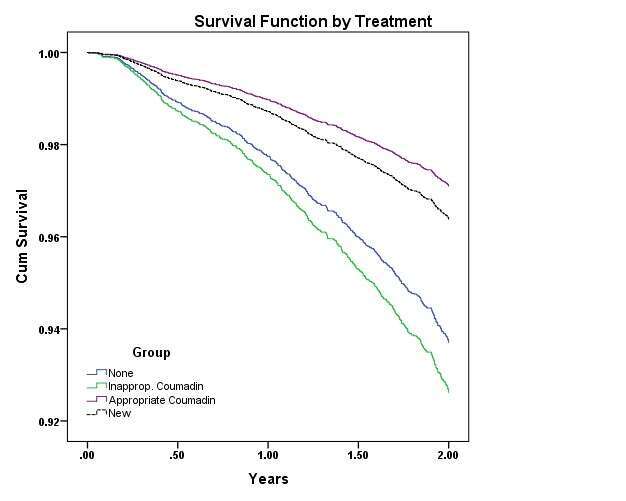
Predictors for Inadequate Utilization of Oral Anticoagulant in Patients with Atrial Fibrillation in the Clalit Health Services in Israel.
Clinical Outcome and Public Health Implications
Patients (pts) who suffer from AF are at 2-3-fold risk of death, stroke, and heart failure compared to patients in sinus rhythm. Effective treatment with vitamin K antagonist (VKA) requires that the time in therapeutic range (TTR) should be above 70%
Real-life data on the predictors for appropriate OAC utilization in Israel is still sparse.
Aim of the study: 1. To describe clinical, organizational and social predictors for utilization over time of OAC in a large public health organization setting. 2. Predictors for adequate therapy with VKA and clinical outcome compered to no therapy, inadequate therapy and Novel Oral Anticoagulant (NOAC) therapy.
Methods: From the North district Clalit health organization’s computerized data base, administrative and clinical data were extracted on patients in whom diagnosis of atrial fibrillation was recorded between 1/1/2012-31/12/2013. Patients with CHADS score ≥1 were included in the analysis. Patients with rheumatic heart disease or mechanical valves were excluded. Adequate therapy with VKA was defined as TTR≥70%.
Results: 6414 pts were included in the study. 2702 pts (42.1%) were treated with VKA. Importantly, of these, only 793 pts (29.4%) were treated adequately with VKA. 384 pts (6%) were treated with NOAC. By multivariate analysis, the predictors for VKA therapy were age, gender, CHADS score≥2, and CHADS-VAS≥3 . Ethnicity, marital status and supplement insurance (“Clalit Mushlam”) were not predictors. In contrast, multivariate predictors for adequate VKA therapy were low CHADS score<3, ethnicity, marital status and supplement insurance, but not age and gender.
Independent predictors for survival were younger age, married status, NOAC, appropriate VKA therapy, lower CHADS score and CHADS-VAS
Conclusion: Most patients in our study were not treated adequately with OAC. Predictors for adequate OAC therapy are socioeconomical as well as clinical. Inadequate OAC therapy is a strong, independent predictor of mortality.

Powered by Eventact EMS